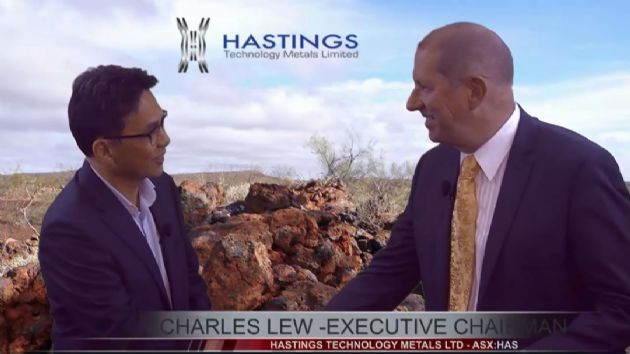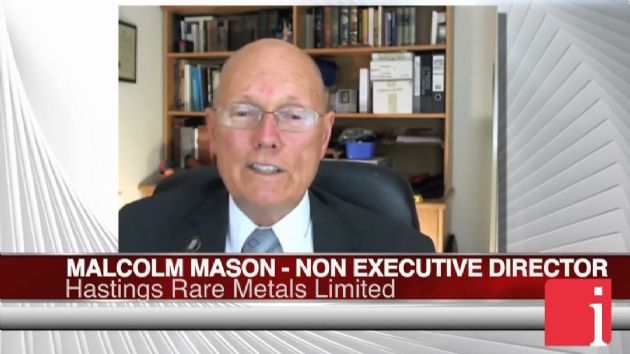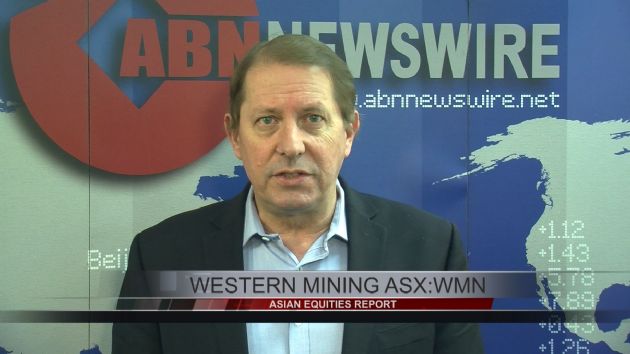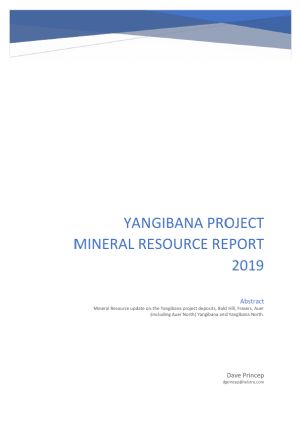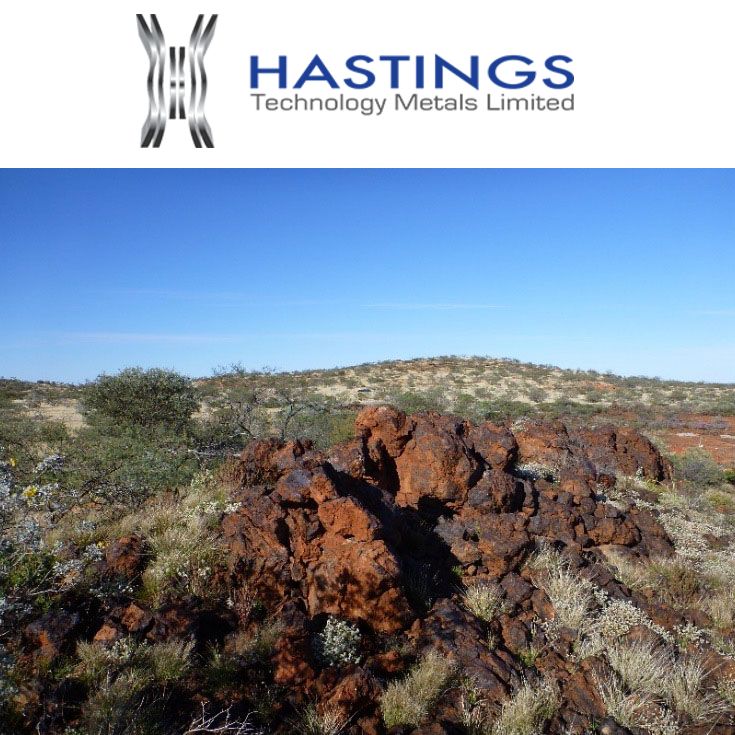
Significant Expansion of Bald Hill Resources and Pit at Yangibana
Sydney, June 7, 2017 AEST (ABN Newswire) - Hastings Technology Metals Limited ( ASX:HAS) is pleased to announce that the first assay results from the Company's 2017 drilling programme at Yangibana have been received. These results are from holes drilled into the western, deeper extension to the current Measured and Indicated Resources and show potential for a significant expansion of the resources and optimised pit at the Bald Hill deposit.
ASX:HAS) is pleased to announce that the first assay results from the Company's 2017 drilling programme at Yangibana have been received. These results are from holes drilled into the western, deeper extension to the current Measured and Indicated Resources and show potential for a significant expansion of the resources and optimised pit at the Bald Hill deposit.
HIGHLIGHTS
- First assay results received from 2017 drilling at Bald Hill
- All holes tested western, deeper extension to the known deposit
- Best intersections are:-
22m at 1.67%TREO including 0.61% Nd2O3+Pr6O11
9m at 1.05%TREO including 0.33% Nd2O3+Pr6O11
8m at 1.84%TREO including 0.61% Nd2O3+Pr6O11, and
6m at 1.90%TREO including 0.74% Nd2O3+Pr6O11
INTRODUCTION
The current JORC Resources at Bald Hill and Bald Hill Southeast are shown in Table 1 (see the link below).
DRILLING RESULTS
Table 2 (see the link below) provides a summary of the best intersections in results received to date.
Collar locations of drilling completed to date at Bald Hill are shown in Figure 1 (see the link below). Drillhole parameters are provided in Appendix 1 (see the link below), and assay details are provided in Appendix 2 (see the link below).
Results from holes BHRC272-275 inclusive are expected to be sufficient to support a further extension to the west of the central portion of the proposed pit.
Holes BHRC281-283 and 285 (as circled in Figure 1 in the link below) were drilled around the intersection achieved last year in BHRC258 that returned 6m (82-88m) at 1.47%TREO including 0.51% Nd2O3+Pr6O11 within a broader intersection of 13m (82-95m) at 0.90%TREO including 0.31% Nd2O3+Pr6O11. Results from these four holes are highly encouraging with significant widths and grades of the target neodymium and praseodymium oxides. It is likely that the next pit optimisation, to be completed in the near future as part of the Company's ongoing Definitive Feasibility Study, will extend the pit over this area.
TERMINOLOGY USED IN THIS REPORT
TREO is the sum of the oxides of the light rare earth elements lanthanum (La), cerium (Ce), praseodymium (Pr), neodymium (Nd), and samarium (Sm) and the heavy rare earth elements europium (Eu), gadolinium (Gd), terbium (Tb), dysprosium (Dy), holmium (Ho), erbium (Er), thulium (Tm), ytterbium (Yb), lutetium (Lu), and yttrium (Y).
To view tables and figures, please visit:
http://abnnewswire.net/lnk/C3QN63Z6
About Hastings Technology Metals Ltd
 Hastings Technology Metals Ltd (ASX:HAS) (FRA:5AM) is advancing its Yangibana Rare Earths Project in the Upper Gascoyne Region of Western Australia towards production. The proposed beneficiation and hydro metallurgy processing plant will treat rare earths deposits, predominantly monazite, hosting high neodymium and praseodymium contents to produce a mixed rare earths carbonate that will be further refined into individual rare earth oxides at processing plants overseas.
Hastings Technology Metals Ltd (ASX:HAS) (FRA:5AM) is advancing its Yangibana Rare Earths Project in the Upper Gascoyne Region of Western Australia towards production. The proposed beneficiation and hydro metallurgy processing plant will treat rare earths deposits, predominantly monazite, hosting high neodymium and praseodymium contents to produce a mixed rare earths carbonate that will be further refined into individual rare earth oxides at processing plants overseas.
Neodymium and praseodymium are vital components in the manufacture of permanent magnets which is used in a wide and expanding range of advanced and high-tech products including electric vehicles, wind turbines, robotics, medical applications and others. Hastings aims to become the next significant producer of neodymium and praseodymium outside of China.
Hastings holds 100% interest in the most significant deposits within the overall project, and 70% interest in additional deposits that will be developed at a later date, all held under Mining Leases. Numerous prospects have been identified warranting detailed exploration to further extend the life of the project.
Brockman Project
The Brockman deposit, near Halls Creek in Western Australia, contains JORC Indicated and Inferred Mineral Resources, estimated using the guidelines of JORC Code (2012 Edition).
The Company is also progressing a Mining Lease application over the Brockman Rare Earths and Rare Metals Project.
Hastings aims to capitalise on the strong demand for critical rare earths created by the expanding demand for new technology products.
| ||
|






